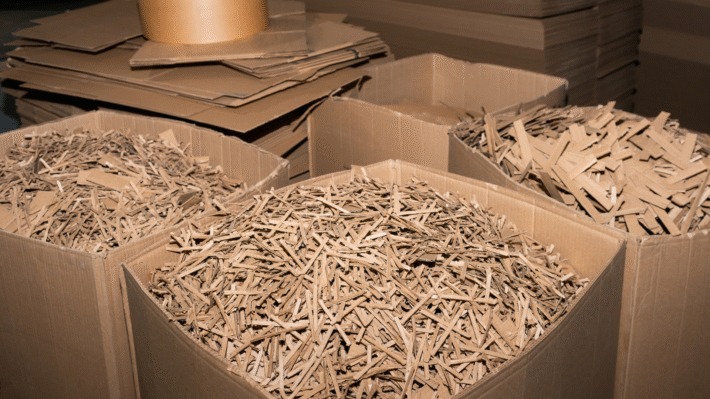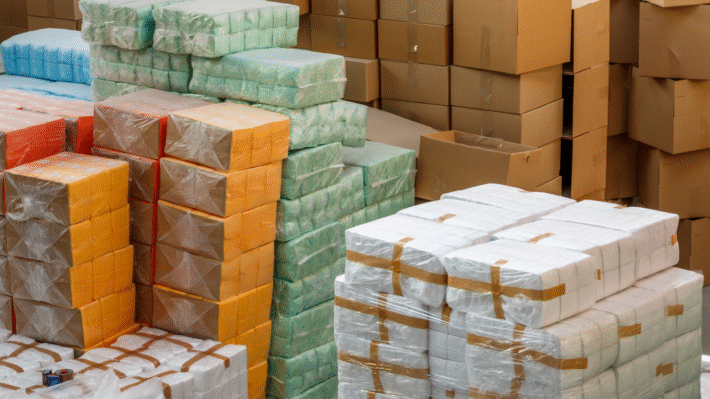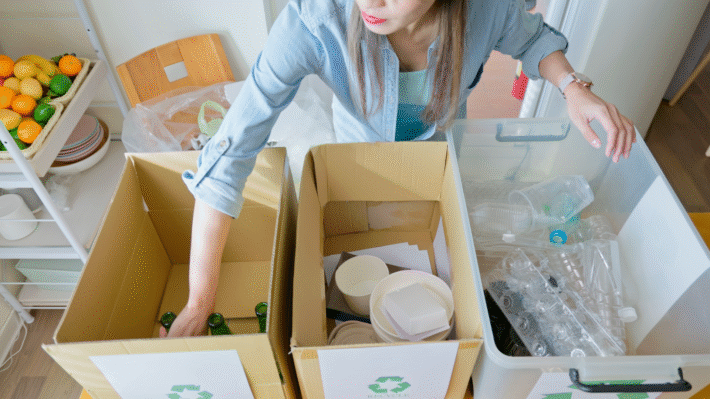Real-Time Pollution Control: Detect and Prevent Contamination Before It Starts

Do you want a world where pollution isn’t just managed but prevented? Real-time analysis for pollution prevention is like having a superpower! It helps us keep an eye on chemical processes to stop bad stuff before it even starts. Imagine a future where we can protect our planet by catching mistakes as they happen. With real-time monitoring, we’re not just reacting; we are acting smartly.
Not sure how it works? Don’t worry, we’ve got you covered. In this article, we’ll explore how this amazing technology stops pollution dead in its tracks, offers a proactive way to protect our environment, and is a game-changer for our planet!
Let’s dive deep and see how each chemical process can help us stay one step ahead in making Earth a cleaner, better place.
The Importance of Real-time Analysis for Pollution Prevention
Pollution is a big problem. It affects the air we breathe, the water we drink, and the world we live in. But there is hope. Real-time analysis can help us stop pollution before it starts. How does it work? Let’s dive in and find out.
Why Monitor Chemical Processes?
Chemical processes happen in factories and other places where products are made. These processes can make pollutants, which are bad for our environment. By monitoring these processes in real-time, we can stop pollutants before they are created.
Understanding Chemical Reactions
Chemicals can change when they react with each other. These changes are called chemical reactions. Some reactions can make harmful pollutants. But if we watch these reactions closely, we can see if pollutants are forming. Then, we can change the process to stop pollution before it happens. To learn more about chemicals and their reactions, take a quick read here.
Identifying Pollutant Formation
Not all chemical reactions make pollutants. But knowing which ones do can help us be on the lookout. By using real-time analysis, we can spot when a pollutant is being formed. Once we find it, we can stop that process and keep our air and water clean. Read more about how scientists identify pollutants here.
The Impact of Pollutants on Our Environment
Pollutants can harm the environment in many ways. From the air we breathe to the water we depend on, pollutants are not our friends. So, why are they so bad, and what can we do about it?
Air Pollution and Health
Air pollution can make us sick. It can cause problems like asthma or even heart disease. When factories release pollutants, it affects the air quality. This is why real-time monitoring is so important. It helps to cut down on air pollution before it harms our health. Find out more about air pollution impacts here.
Water Contamination Concerns
Pollutants can also get into our water. Bad chemicals can leak into rivers and lakes, making the water unsafe to drink or swim in. By catching these contaminants early, we can keep our water clean and safe. For more on keeping water clean, you can visit this link.
How Real-time Analysis Works
Understanding the magic of real-time analysis is like having eyes everywhere. It’s a way to watch everything as it happens, and it’s super helpful for stopping pollution before it even starts. Let’s dig into how this works.
Tools and Techniques for Monitoring
Real-time analysis needs the right tools and techniques. They help us keep a close watch on what’s happening with chemicals.
Sensors and Their Functions
You know those little machines called sensors? They are the stars of the show! They sniff out chemical changes just like a dog sniffs out its favorite treat. By using sensors, we can know immediately if something toxic is about to form. Imagine them as the detectives of the chemical world, always on duty and ready to report the facts.
Data Collection and Interpretation
Once the sensors do their job, the next step is data collection and interpretation. All the info they gather goes into a computer. This computer reads the numbers and tells us if something is wrong. If it finds a problem, we can fix it fast, preventing pollution from growing. It’s kind of like having a calculator that also warns you if you’re running out of time on a test.
Benefits of Real-time Data
Having real-time data is like having a superhero team that helps keep the environment clean.
Timely Decision Making
Real-time analysis lets us make timely decisions. Once data shows something is wrong, actions can be taken right away. This quick action stops harmful chemicals from harming our world. It’s like catching a small fire before it turns into a big blaze.
Reducing Emissions Effectively
But that’s not all! With real-time data, we can also cut back on harmful gases known as emissions. Imagine lowering the smoke coming out of a chimney before it fills the sky. When we use real-time analysis, we reduce emissions effectively. And when emissions go down, the air we breathe gets cleaner.
In conclusion, knowing how real-time analysis works is like having a secret weapon against pollution. With the right tools, quick thinking, and smart data, we can keep our environment safe and sound.
Proactive Environmental Protection
Proactive environmental protection is all about stopping pollution before it starts. It means keeping our planet safe by taking early action. How can we do this? Let’s dive in and find out!
Preventing Pollution before It Happens
Preventing pollution is like guarding our home before it gets messy. It’s about keeping harmful things out of the air, water, and ground before they become a problem.
Strategies for Prevention
There are smart ways to prevent pollution. One way is to use better tools and machines that don’t release bad chemicals. Factories can use clean energy like solar or wind power instead of burning coal. This helps keep the air crisp and clear.
Another way is to recycle more. If we use items again and again, less trash ends up in the landfill. This keeps our planet beautiful and clean. Our efforts now make a big difference later.
Long-term Sustainability
Long-term sustainability means thinking about the future. What we do today should keep the earth healthy for years to come. It’s like planting a tree. In time, the tree grows big and gives us shade, clean air, and a place for birds to live.
To make sure we leave a good earth for those who come after us, we have to stay smart. We must use earth-friendly products, save water, and cut back on waste. Every little action builds up to something great!
Engaging Communities for Action
Getting everyone involved is key. When communities come together, amazing things happen. By acting together, we can all make a big change.
Educational Initiatives
Education is a powerful tool. When people know more about the environment, they make better choices. Schools can teach kids about nature and show them how to protect it. There can be fun activities like tree planting and clean-up days.
Families can learn too, like how to recycle properly or conserve energy. Knowledge is our superhero power for caring for our world.
Community Involvement Projects
Projects that bring people together make them feel like a team. Community gardens are a great example. They bring fresh food and green spaces to neighborhoods.
Beach and park clean-ups also bring folks out to help, showing that everyone can do a little to make a big impact. The more we work together, the healthier our planet becomes.
Keep learning more about keeping our planet safe by checking out the Earth Day Network and National Geographic’s Environment section. Working together, we can make a brighter and cleaner future!
The Future of Real-time Analysis
Real-time analysis is helping us make smarter choices for our planet. Let’s dive deeper into what’s coming up in this field.
Innovation in Monitoring Technology
Technology is always changing, and in real-time analysis, innovation is the key to success. It helps us keep an eye on things more effectively.
Emerging Tools and Software
There are always new tools popping up to make monitoring better. Imagine having a smart gadget that tells us what is happening right now with chemicals. These tools and software can tell us how things are reacting and if pollutants are forming. This is like having a superhero that helps protect the environment!
For more, visit National Monitoring Tools.
Improving Accuracy and Reliability
When we want to be sure of what’s happening, we need our info to be accurate. Improving accuracy and reliability is like having a clearer picture. We use better technology that ensures what we see is the real deal. Think of it like fixing a fuzzy TV so we can see all the details clearly.
For details on improving monitoring technology, check out Science and Technology.
Global Trends and Collaborations
Across the world, global trends and working together are shaping how we use real-time analysis.
International Environmental Policies
Countries are coming together to set rules that help everyone. These are called international policies. They help us protect nature on a big scale. It’s like everyone agreeing to play by the same rules for a cleaner planet.
For more on these policies, see International Cooperation.
Collaborative Research Efforts
Working together with other countries makes us stronger. Collaborative research means scientists from different places sharing ideas and findings. This teamwork leads to amazing solutions for our environmental challenges.
Learn more about research collaboration at International Science.
In the future, with these innovations and global teamwork, real-time analysis will help us take even better care of our planet.
3 Comments
Comments are closed.




[…] These plants grow quickly, so we don’t run out. Using PLA means we use less oil and make less pollution. It’s good for the air and the Earth. PLA gives us strong and flexible materials without […]
[…] Contamination in our soil and water is a growing problem that affects everyone. We have to understand where this pollution comes from to find a solution. Let’s break it down and see what we can do! […]
[…] contamination is a critical aspect of effective recycling. Contaminants in a recycling stream can degrade the […]